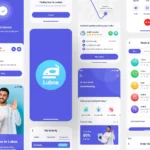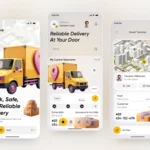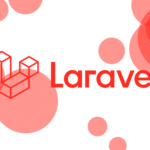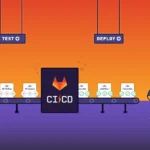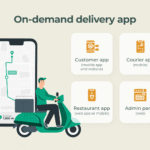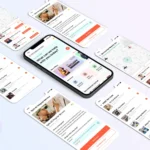What Are On-Demand Beauty Service Apps?
On-demand beauty service apps are digital platforms that allow users to book beauty and wellness treatments at home with verified professionals. At Read Authentic, we define these platforms as structured marketplaces that connect customers with trained beauticians for services such as hairstyling, grooming, makeup, and spa sessions.
These apps streamline booking through real time availability, organized service menus, and trusted customer ratings. Users explore treatments, compare quality, check reviews, and confirm appointments within minutes, removing the need for walk-in salon visits and long waiting times.
According to the Statista Beauty and Personal Care Market Overview, global beauty revenue is expected to reach 646 billion USD in 2024, driven by rising digital adoption and shifting consumer habits toward at-home services.
Why On-Demand Beauty Apps Are Growing Rapidly
On-demand beauty apps are expanding because customers now prefer flexible, at-home grooming and wellness services that reduce waiting time and match busy daily routines. Urban lifestyles, rising hygiene awareness, and comfort-driven choices continue to accelerate this shift across major global cities.
According to the Beauty Concierge Services Market Outlook 2025 to 2035, the beauty concierge services market is expected to grow from 5.6 billion USD in 2025 to 15.1 billion USD by 2035, with a projected CAGR of 10.4 percent. This reflects strong demand for personalized, on-demand beauty experiences delivered through mobile platforms.
Key Reasons Why On-Demand Beauty Apps Are Growing
Increased demand for at-home services that save time
Rising hygiene and safety preferences after global health shifts
Strong adoption of mobile-first booking behavior
More women entering the workforce with limited free time
Rising disposable income in urban regions
Transparent pricing and verified professionals increasing trust
Better utilization and stable income for beauticians
Digital adoption in beauty services accelerating across global markets
Who Uses On-Demand Beauty Apps and Where Are They Most Popular?
On-demand beauty apps attract users who prefer convenient, at-home grooming and wellness services that save time and offer predictable quality. The primary user groups include working professionals, young adults in urban regions, new mothers, and individuals seeking hygienic and personalized beauty treatments without visiting a salon.
According to the Statista Online Beauty Services Usage Report, more than 25 percent of global beauty consumers used online or app-based beauty services in 2023, with the highest adoption seen in North America, the Middle East, and major Asia-Pacific cities like Mumbai, Dubai, Singapore, and Seoul.
Where On-Demand Beauty Apps Are Most Popular
Densely populated urban cities with high mobile usage
Regions where women workforce participation is increasing
Markets with strong demand for home-based convenience
Countries with established digital payment ecosystems
Areas where salon density is high but service wait time is long
Locations where safety and hygiene concerns drive at-home preferences
Key User Segments
Working women with limited free time
Urban millennials and Gen Z consumers
New mothers who prefer at-home grooming
Frequent salon-goers seeking faster alternatives
Elderly users needing in-home assistance
Professionals requiring quick grooming before events
How On-Demand Beauty Service Apps Work
On-demand beauty apps follow a simple marketplace flow where customers choose a service, select a beautician, and confirm an at-home appointment through a mobile app. The platform manages availability, pricing, professional verification, and payment processing to ensure a predictable and trusted booking experience.
According to the Statista On-Demand Home Services Market Overview, global demand for app-based home services continues to rise as users increasingly prefer real time booking, cashless payments, and verified professionals for at-home tasks, including beauty, grooming, and wellness services.
How These Apps Typically Work
Users browse beauty services and choose desired treatments
App shows available beauticians with ratings and prices
Customers select a time slot and confirm the booking
Beauticians accept the request and reach the customer’s location
Payment is processed digitally after service completion
Users leave ratings and reviews to maintain platform quality
What Features Should a Beauty Service App Include?
A strong on-demand beauty app needs features that make booking simple for customers, efficient for beauticians, and manageable for platform owners. The goal is a smooth experience where users can explore services, compare professionals, and complete appointments without confusion or delays.
Below are the key features every beauty service app must include for each user group.
Essential User Features
Easy service browsing with clear treatment categories
Beautician profiles with ratings, reviews, and pricing
Real time availability and instant booking
In-app chat or call for quick communication
Secure online payments and multiple payment options
Booking history with repeat appointment options
Real time tracking for beautician arrival
Features for Beauticians and Service Providers
Simple profile creation and verification workflow
Calendar management for accepting or declining bookings
Job notifications and clear service instructions
Earnings dashboard with payout history
Route navigation to customer locations
Tools for managing availability and time slots
Admin Panel Features
Service catalog management
Beautician onboarding and verification tools
Pricing control and commission settings
Booking oversight and customer support dashboard
Payment reconciliation and financial reporting
Complaint and dispute resolution tools
Analytics for usage patterns and performance insights
What Technology Stack Is Best for Beauty App Development?
An on-demand beauty app needs a tech stack that supports real time booking, secure payments, reliable location services, and a smooth user experience. The stack should be scalable enough to handle growing traffic and flexible enough to support new features without major redevelopment.
Below is a practical breakdown of the recommended technology stack for building a high-performance beauty services platform.
Frontend Technologies
React Native for cross-platform mobile applications
Flutter for fast performance and consistent UI
React.js or Vue.js for web dashboards
Backend Technologies
Node.js for scalable real time systems
Laravel for structured API development and secure workflows
Django for beauty apps requiring advanced admin capabilities
Database & Storage
PostgreSQL for structured data and transactional accuracy
MongoDB for flexible data models
AWS S3 or Google Cloud Storage for storing images and documents
Real Time & Location Services
Firebase for real time updates and notifications
Google Maps API for location tracking and routing
Socket.io for instant communication (chat, booking updates)
Payments & Authentication
Stripe or Razorpay for secure transactions
Auth0 or Firebase Auth for user authentication
JWT for secure session management
Admin & Analytics Tools
Metabase or Google Data Studio for analytics
Firebase Crashlytics for app stability monitoring
SendGrid or Mailgun for automated communication
How to Build an On-Demand Beauty Services App
Building an on-demand beauty app requires a clear development plan that covers market research, feature design, technical execution, and post-launch improvement. The process must ensure the app works smoothly for users, beauticians, and administrators while supporting real time booking and secure payments.
Below is a practical, step-by-step development framework.
1. Research the Market and Define the Service Model
Identify your target users and regions
Select service categories such as grooming, makeup, or spa
Define whether beauticians will be freelancers or full-time partners
2. Map Out Core Features
User features like service browsing, ratings, and payments
Beautician tools for bookings, earnings, and availability
Admin controls for verification, pricing, and analytics
3. Create User Flow and App Design
Build simple booking flows with minimal steps
Design clear service categories and beautician profiles
Prioritize a clean and predictable mobile-first UI
4. Choose the Right Technology Stack
React Native or Flutter for app development
Laravel, Node.js, or Django for backend APIs
PostgreSQL or MongoDB for database management
5. Develop the Core Modules
User onboarding and authentication
Real time booking engine
Payment integration
Beautician availability and scheduling
Notifications and in-app communication
6. Test the Platform Thoroughly
Functional testing for all user types
Load testing to handle peak booking hours
Real device testing across different OS versions
7. Launch the MVP
Release essential features first
Monitor user behavior, engagement, and early feedback
Track booking flow issues and performance dips
8. Scale and Improve
Add loyalty programs, subscriptions, or premium services
Expand to new cities or service categories
Improve beautician verification and rating systems
What Is the Cost to Build an On-Demand Beauty Services App?
The cost to build an on-demand beauty service app depends on features, platform complexity, integrations, and the regions where developers are hired. A basic MVP requires essential booking, payments, user profiles, and beautician tools, while a full-scale platform includes real time tracking, dynamic pricing, and advanced admin controls.
For most startups, the typical development cost ranges are outlined below.
Estimated Cost Breakdown
Basic MVP: 15,000 USD to 25,000 USD
Mid-Level App with Real Time Features: 25,000 USD to 45,000 USD
Full-Scale Platform with Advanced Modules: 45,000 USD to 90,000 USD
Key Factors That Influence Total Cost
Number of user roles (customer, beautician, admin)
Real time capabilities such as tracking and instant notifications
Payment integrations and security requirements
Design complexity and number of service categories
Backend load and need for automation
Hosting, storage, and cloud infrastructure needs
Typical Timeline for Development
MVP: 8 to 12 weeks
Full App: 16 to 24 weeks
Multi-region rollout: 6 to 9 months
Additional Long Term Costs to Consider
App maintenance and version updates
Cloud hosting and storage
Marketing and user acquisition
Beautician onboarding and verification operations
What Revenue Models Work Best for Beauty Service Platforms?
On-demand beauty platforms earn revenue by charging fees on each booking, offering subscription plans, and enabling premium services for both customers and beauticians. The goal is to create predictable income streams without hurting user experience or reducing service quality.
Below are the most effective revenue models used in successful beauty service apps.
1. Commission Per Booking
Platform takes a percentage on each completed service
Works for freelance and partner-based beautician networks
Keeps revenue tied to actual usage
2. Subscription Plans for Customers
Monthly or annual membership for discounted rates
Priority booking and reduced service fees
Encourages long term engagement
3. Beautician Subscription Model
Professionals pay a fixed monthly fee to receive bookings
Suitable when the platform offers steady demand
Helps maintain predictable platform income
4. Surge Pricing During Peak Hours
Higher service prices during high-demand periods
Common for festivals, weekends, and event seasons
Increases revenue without extra operational cost
5. In-App Product Sales
Beauty products, grooming kits, and skincare items
Adds a secondary revenue stream with minimal effort
Works well for platforms with loyal user bases
6. Featured Listing for Beauticians
Professionals pay to appear at the top of search results
Boosts visibility and helps new beauticians gain traction
Non-intrusive advertising format
7. Corporate or Group Packages
Deals for offices, bridal groups, events, and shoots
Higher ticket size and better revenue per booking
What Are the Benefits of Launching an On-Demand Beauty Services App?
Launching an on-demand beauty app offers strong business advantages by creating a scalable service marketplace with predictable bookings and structured demand. Customers benefit from comfort and flexibility, while beauticians gain access to steady work and transparent earnings.
Below are the key benefits for both businesses and users.
Business Benefits
Access to a large and fast-growing digital beauty audience
Scalable marketplace model with repeat customers
Predictable revenue through commissions and subscriptions
Lower operational costs compared to physical salons
Ability to expand city by city with minimal overhead
Strong data insights for optimizing pricing and services
Opportunity to build brand loyalty with personalized offers
Beautician Benefits
Steady demand without expensive shop rentals
Transparent payout cycles and clear commission structure
Flexible working hours and service control
Ability to build a verified profile and long term clientele
Customer Benefits
At-home beauty services that save time
Transparent pricing with no hidden charges
Verified beauticians with ratings and reviews
Easy scheduling, rescheduling, and real time tracking
Access to a wide range of beauty services from one app
What Are the Biggest Challenges and How to Avoid Them?
Building and scaling an on-demand beauty services app comes with operational, technical, and marketplace challenges. These issues usually appear when platforms grow quickly or when beautician networks are not managed properly. Addressing them early helps maintain service quality and customer trust.
Below are the most common challenges and the practical ways to avoid them.
Major Challenges
Difficulty verifying beauticians at scale
Maintaining consistent service quality across cities
Handling cancellations and last-minute scheduling changes
Ensuring safety and trust during at-home visits
Balancing commission rates with beautician earnings
Managing peak-hour load and real time bookings
Preventing disputes between customers and beauticians
Handling app stability during high traffic periods
How to Avoid These Challenges
Build a strong verification process for beauticians
Use standardized service checklists to ensure quality
Offer flexible rescheduling with automated reminders
Implement in-app emergency support and ID verification
Keep commission fees transparent and predictable
Use real time availability systems to prevent double bookings
Add customer-beautician support channels inside the app
Conduct regular load testing and app performance audits
Real Examples of Successful Beauty Service Apps
Several on-demand beauty platforms have gained strong traction across major markets by focusing on service quality, verified professionals, and seamless booking experiences. These examples show how different business models can succeed in the beauty-tech segment.
1. Urban Company (India, UAE, Singapore)
Offers at-home beauty, grooming, spa, and wellness services
Known for strict beautician training and quality standards
Uses subscription plans and premium service packages
Official site: Urban Company
2. Glamsquad (United States)
Provides on-demand hairstyling, makeup, and nail services
Focuses on event-driven and premium beauty bookings
Strong personalization and stylist-matching features
Official site: Glamsquad
3. Blow LTD (United Kingdom)
Mobile beauty services for hair and makeup at home
Targets busy urban customers needing fast, professional services
Strong positioning around premium, on-location beauty treatments
Official site: Blow LTD
4. Priv (United States, Canada)
On-demand beauty and wellness services at home, office, or hotel
Services include hair, makeup, nails, facials, massage, and tanning
Operates in multiple cities with vetted beauty professionals
Official site: Priv
5. Belliata (Europe and Global)
Hybrid model combining salon booking and mobile services
Used for beauty, wellness, and barber appointments
Provides tools for both salons and independent professionals
Official site: Belliata
Comparison Table: Leading On-Demand Beauty Service Apps
Platform | Countries | Core Services | Unique Strengths |
|---|---|---|---|
Urban Company | India, UAE, Singapore | Beauty, grooming, spa, wellness | Strict beautician training, subscription plans, strong quality control |
Glamsquad | United States | Hair, makeup, nails | Event-focused bookings, stylist matching, premium services |
Blow LTD | United Kingdom | Hair and makeup at home | Fast, professional on-location services, strong urban presence |
Priv | United States, Canada | Hair, makeup, nails, facials, massage, tanning | Multi-service beauty and wellness coverage, vetted professionals |
Belliata | Europe & Global | Salon booking and mobile beauty | Hybrid model, discovery plus scheduling, supports freelancers and salons |
Security, Payments, and Compliance Requirements
Security and compliance are critical for beauty service apps because customers share personal details, addresses, and payment information during bookings. A secure infrastructure ensures trust, reduces operational risk, and protects both users and beauticians from fraud or data misuse.
Below are the essential requirements every on-demand beauty platform must follow.
Security Requirements
End-to-end encryption for user data and communication
Secure API gateway to protect booking and payment flows
Role-based access control for user, beautician, and admin accounts
Regular vulnerability testing to identify security gaps
Encrypted storage for personal and service-related data
Payment Requirements
PCI-DSS compliant payment gateways for safe transactions
Tokenized card storage instead of saving card details
Support for multiple payment options such as cards, wallets, and UPI
Automated payout cycles for beauticians with transaction logs
Refund and dispute resolution workflows for failed or canceled bookings
Compliance Requirements
GDPR compliance for handling user data in EU regions
Local data protection laws based on operational countries
Background verification and ID checks for beauticians
Clear privacy policy and service terms inside the app
Consent-based data collection for analytics and personalization
-
How do on-demand beauty apps work?
These apps connect users with trained beauticians who provide at-home services. Customers browse treatments, book a time slot, make a digital payment, and get the service delivered at their location.
-
What services can be offered through these apps?
Common services include grooming, hairstyling, makeup, spa treatments, nails, facials, waxing, and event-based beauty packages.
-
How do beauticians join the platform?
Beauticians typically complete profile setup, submit ID verification, upload certifications, and pass a screening or training process defined by the platform.
-
How do these apps make money?
Revenue models include commissions per booking, beautician subscriptions, premium listings, surge pricing, and product sales.
-
What technology is required to build such an app?
Most apps use React Native or Flutter for mobile development, backed by Node.js, Laravel, or Django APIs, with secure cloud hosting and real time systems.
-
How long does it take to build an on-demand beauty app?
A basic MVP takes around 8 to 12 weeks, while a full-featured platform can take 16 to 24 weeks depending on scope.
-
Accordion Title
Accordion Content
Research and Written by Read Authentic Team
Edited By: Read Authentic & Team
Expert Reviewed By: Zubair Pateljiwala
Fact Checked By: Alpesh Nakrani
Copy Edited By: Nayan Mistry


